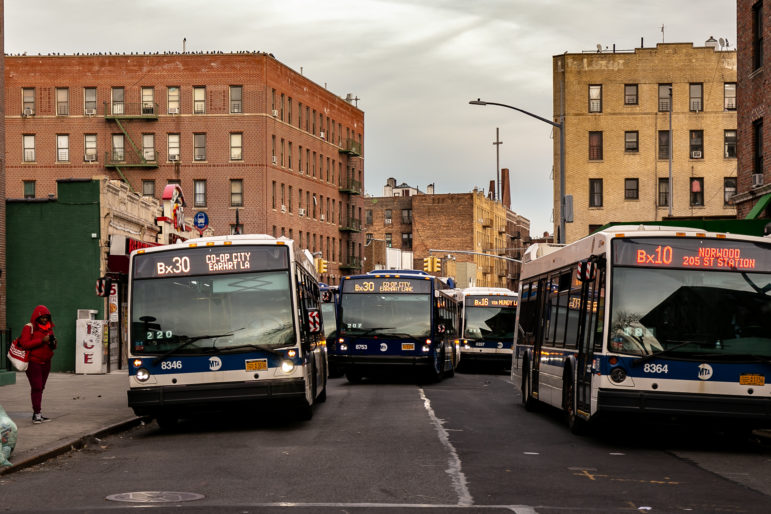
Adi Talwar
A flock of buses gets ready to fly on 206th Street near Rochambeau Avenue in the Bronx.William Long, a volunteer with the transit advocacy group Riders Alliance, regularly commutes from his home in the Bronx to JFK airport where he works. The journey requires a ride on the Bx41 bus, then three subway lines, another bus in Queens, and finally, the JFK AirTrain.
The trip takes about two hours, and if he’s commuting home at night, he often faces long waits—especially for the bus.
“At night, you have not only flight attendants but cargo handlers, TSA agents, maintenance people, restaurant workers…all sorts of people just waiting for these buses,” Long says. “It’s really sad because service is so infrequent at those hours.”
Long is far from alone when it comes to Bronx residents who travel to and from work outside the standard 9-to-5: the borough is home to 79,000 people who commute at night between the hours of midnight and 5 a.m., more than than any other borough, according to Census data from 2017. And while the MTA released a plan in October to completely redesign the Bronx’s bus network—part of a citywide overhaul of the bus system that aims to increase dropping ridership—night and weekend service won’t get a boost from the changes.
Of the 60 bus routes included in the plan, just 19 of them will run at night, and even the routes that will offer night service will do so infrequently, with the most frequent coming every half hour but the majority running only every 45 to 60 minutes. When it comes to weekend service, nine lines will see buses running more frequently on Saturdays or Sundays under the redesign—which includes the additions of three all-new routes—though a dozen lines will actually see weekend frequency decrease as part of the overhaul.
The MTA says the changes will make the Bronx’s bus network more efficient, updating routes that have sat unchanged for decades and “finding innovative ways to reallocate and reinvest finite resources,” according to New York City Transit President Andy Byford. But several transit advocates are disappointed with the final proposal, saying it fails to provide meaningful service improvements that would draw riders back to the bus; nearly every Bronx local bus route saw its ridership drop between 2017 and 2018, according to MTA data.
“There was a real opportunity to use this redesign as an engine of opportunity to improve people’s access to jobs, to school, and to other things the city has to offer,” says Danny Pearlstein, spokesman for the advocacy group Riders Alliance. “So far it has fallen short.”
A borough by borough approach
The MTA released its final plan for the Bronx bus network redesign in October, part of its borough-by-borough effort to increase bus ridership by redesigning routes and removing bus stops to speed up rides. Staten Island’s express bus network was overhauled in 2018, while planning and outreach is currently underway for changes in Queens and Brooklyn.
The MTA says the Bronx redesign will provide a “new baseline” for the borough’s 675,000 bus customers, and represents the first real change to its bus routes in nearly a century.
Bronx Bus Redesign
Changes to Weekend Frequency and Span of Service
Routes 1-24
| ROUTE | Frequency on Weekends | Span of Service on Weekends | Overnight Service? |
| Bx1 Local / Limited | Unchanged | Unchanged | No |
| Bx2 | Unchanged | Unchanged | No |
| Bx3 | Unchanged | Unchanged | No |
| Bx4 | Increased | Unchanged | No |
| Bx4A | Increased | Increased | No |
| Bx5 | Decreased | Unchanged | No |
| Bx6 | Unchanged | Unchanged | Yes—every 60 minutes |
| Bx6 SBS | Unchanged | Unchanged | No |
| Bx7 | Unchanged | Unchanged | No |
| Bx8 | Unchanged | Unchanged | No |
| Bx9 | Unchanged | Unchanged | Yes—every 45 minutes |
| Bx10 | Unchanged | Unchanged | Yes—every 40 minutes |
| Bx11 | Increased | Increased (overnight service added) | Yes—every 40 minutes |
| Bx12 | Unchanged | Unchanged | Yes—every 40 minutes |
| Bx12 SBS | Unchanged | Unchanged | No |
| Bx13 | Unchanged | Unchanged | No |
| Bx15 | Decreased | Unchanged | Yes—every 30 minutes |
| Bx16 | Unchanged | Unchanged | No |
| Bx17 | Unchanged | Unchanged | No |
| Bx18 | Increased | Increased | No |
| Bx19 | Unchanged | Unchanged | Yes—every 45 or 50 minutes |
| Bx20 | Unchanged | Unchanged | No |
| Bx21 | Unchanged | Unchanged | Yes—every 45 minutes |
| Bx22 | Unchanged | Unchanged | Yes—every 60 minutes |
| Bx23 | Increased | Unchanged | No |
| Bx24 | Unchanged | Unchanged | Yes—every 60 minutes |
Those changes include the addition of three new routes: the Bx25, which will serve Co-Op City and eastern Bronx, the M125, which will run through Harlem to the South Bronx and replace the southern leg of the Bx15, as well as a new express route called the BxM5, connecting the north Bronx to midtown Manhattan, replacing part of the BxM4 route.
The plan also extends or adjusts routes to provide new transfer points, including between the Bx40 and Bx42 to the 2 and 5 subway trains and a route connecting northern Co-Op City to Bedford Park. The changes are also expected to help speed up rides by eliminating around 400 bus stops, spreading stops out more evenly across routes. Current stops in the Bronx are an average of 882 feet apart, but will increase to 1,092 feet apart under the plan.
“I think overall, it definitely makes certain areas more efficient,” says Allessandra Biaggi, New York State Senator for the Bronx and Westchester. In particular, she praised the addition of overnight service on the Bx29 route, which links to City Island and will run every 40 minutes at night under the new plan. The current schedule has the last bus out of City Island departing at 1:10 a.m. on weekdays and Sundays, and at 2:11 a.m. on Saturdays.
“Businesses lose out and lose money because people want to leave by a certain time when they come by bus,” Biaggi says. “It really doesn’t incentivize people to want to travel there.”
But Biaggi also sees some negatives in the redesign plan, including the lack of service on other routes during late nights and weekends, as well as cuts to express service in her district. On November 18th, she and other elected officials organized a town hall to address those cuts, drawing hundreds of attendees. Under the MTA’s plan, nine of the Bronx’s express bus routes will see decreased frequency or service hours on weekends, despite the fact that nearly all of those routes saw increased weekend ridership between 2017 and 2018, MTA statistics show.
“There are specific cuts in Riverdale that make it really challenging for certain people to get around, or to go to Manhattan, or to go to the doctor, or to go to school,” Biaggi says.
Bronx Bus Redesign
Changes to Weekend Frequency and Span of Service
Routes 25-46
| ROUTE | Frequency on Weekends | Span of Service on Weekends | Overnight Service? |
| Bx25 | Increased – New route | New route | No |
| Bx26 | Decreased | Unchanged | No |
| Bx27 | Unchanged | Unchanged | Yes—every 40 minutes |
| Bx28 | Unchanged | Unchanged | Yes—every 40 minutes |
| Bx29 | Increased | Increased (overnight service added) | Yes—every 40 minutes |
| Bx30 | Unchanged | Unchanged | No |
| Bx31 | Unchanged | Unchanged | No |
| Bx32 | Unchanged | Unchanged | No |
| Bx33 | Unchanged | Unchanged | No |
| Bx34 | Unchanged | Unchanged | No |
| Bx35 | Unchanged | Unchanged | Yes—every 60 minutes |
| Bx38 | Unchanged | Unchanged | No |
| Bx36 | Unchanged | Unchanged | Yes—every 50 minutes (local buses only) |
| Bx39 | Unchanged | Unchanged | Yes—every 60 minutes |
| Bx40 | Unchanged | Unchanged | Yes—every 60 minutes |
| Bx41 | Unchanged | Unchanged | Yes—every 60 minutes |
| Bx41 SBS | Unchanged | Unchanged | No |
| Bx42 | Unchanged | Unchanged | No |
| Bx46 | Unchanged | Unchanged | No |
Jaqi Cohen, a transit advocate for the Straphangers Campaign, thinks the overall Bronx redesign includes some improvements, but could have gone further if more funding were allocated to it.
“I think that they made a lot of good changes—we were excited to see some of the stop consolidation there and some of the more direct routing,” she says. “Unfortunately, we didn’t see enough increased frequency of service and that was really in part thanks to the governor and the state and the operating budget the MTA is dealing with right now.”
An MTA spokeswoman told City Limits that there is no budget number available yet for the Bronx bus plan, since it needs to undergo another round of public outreach before the MTA board votes on it sometime in 2020.
Ben Fried, communications director for TransitCenter, explained that the Bronx bus redesign requires more attention than Staten Island’s express buses—which the MTA revamped in 2018—since the Bronx’s network is much larger and complex. On some Bronx crosstown routes, buses carry between 20,000-30,000 riders a day, he says.
“The improvements in frequency are kind of partial. Yeah, they did a few more runs in, but the routes in the Bronx are not going to run as frequently as bus rates in a city like Toronto,” Fried says. “We expect the subway to come every 20 minutes during overnight hours, so we’re looking for that same type of frequency for the Bronx bus routes. I think it’s a good goal.”
Current service seen as lacking
City Limits recently spoke with a number of bus commuters in the Bronx, several of whom said they either weren’t aware of, or not paying attention to, the MTA’s overhaul plan. They offered varied opinions about current bus service in the borough.
“The wait is far too long…the phone says three minutes away, while the bus is stuck in traffic 20 minutes away,” says Victor Estrella, a Bronx resident who usually takes the bus on weekends to save gas money. His daughter, Yadyvic Estrella, agreed.
“Weekend mornings are alright, I suppose, more on time than not. Evenings though—that’s a different story. I have to wait at least 15 minutes for the bus to come,” she said, adding that she takes the bus at least six days a week.
Abena Wirekoh, who takes the Bx41 most often, thinks bus service is actually better on weekends because buses are less crowded than on weekdays. But she would like to see more Select Bus Service routes, and more reliability in general, recounting one commute home that took hours during inclement weather.
“It was snowing and I had to wait an hour for the Bx15, followed by two hours stuck in traffic unable to move,” she says, adding that she decided to walk home in the snow to avoid the overcrowded bus.
Bronx Bus Redesign
Changes to Weekend Frequency and Span of Service
Bronx-Manhattan and Bronx-Queens Routes
| ROUTE | Frequency on Weekends | Span of Service on Weekends | Overnight Service? |
| Q50 Limited | Unchanged | Unchanged | No |
| M125 (New Route) | Increased (new route) | Increased | Yes, every 60 minutes |
| BxM1 | Decreased | Increased Saturday AM, decreased PM | No |
| BxM2 | Decreased | Increased Sunday AM, decreased PM | No |
| BxM3 | Decreased: Sunday service discontinued | Decreased | No |
| BxM4 | Decreased: weekend service discontinued | Weekend service discontinued | No |
| BxM5 (New Route) | New Route—weekday service only | New Route—weekday service only | No |
| BxM6 | Decreased: weekend service discontinued | Weekend service discontinued | No |
| BxM7 | Decreased Saturdays, increased Sundays | Decreased | No |
| BxM8 | Decreased | Decreased | No |
| BxM9 | Decreased | Decreased | No |
| BxM10 | Unchanged | Unchanged | No |
| BxM11 | Decreased | Increased Saturday AM, decreased PM | No |
| BxM18 | Weekday service only | Weekday service only | No |
A missed opportunity
Even with the positive changes the Bronx bus system will see from the redesign, many still worry that off-peak service—on weekends and late nights—could be left in the dust. Out of 60 routes included in the proposal, only three will see an improvement in late night service under the plan, while the rest will remain the same. On weekends, 12 bus routes will see some kind of improvement in frequency or span of service hours from the changes, though 12 routes will also see some kind of decrease in weekend service.
Commuters who use public transit at off-peak times, like nights and weekends, tend to work in service and other public-facing industries, like retail, food service, emergency services, airport workers, nurses and home health aides, experts say. And a lousy commute can impact how well they can perform their jobs.
“Not only do you have to be at work on time, but in many cases people’s lives depended on it,” says Eli Dvorkin, of the Center for an Urban Future, which published a report in 2018 that found health care workers face the longest commutes of any private-sector workers in the city, and that a significant portion of them commute by bus.
“You need to be there ready to go and then you need to be on your feet for up to 12 hours at a stretch and not only on your feet but personable and smiling because if you’re a front-line health care worker, there’s a lot riding on just your attitude when you get to work,” he explains. “If you’ve just gone through a two-hour, grueling commute, it really harms your ability to do a great job and in healthcare that job really matters.”
Advocates say improving bus frequency during off-peak times could have meaningful benefits for those commuters who rely on it.
“You’re coming home from a midnight shift, cleaning an office building, and you have to take the subway to the end of the line and then get on a bus, you might be waiting for 30 or 40 minutes depending on when your train comes to the station, and that is unacceptable,” says Pearlstein. “That is the time where people are spending away from their families, time they could be earning money, studying to improve their situation and get a better job, or they could be sleeping to recuperate. By taking up all that time, what you’re saying is your time is not valuable.”
But the MTA says it based its decisions in part on ridership numbers, and late at night, those numbers are “usually extremely low, and running nearly-empty buses is costly and an inefficient use of limited resources,” according to the Bronx redesign plan. Weekend ridership is also lower than weekdays: MTA data shows there were 675,045 bus boardings on an average weekday in May 2018, compared to 390,831 on an average Saturday and 296,619 on Sunday.
Critics, though, point to the agency’s decision to spend $249 million over the next four years to hire 500 new police officers to patrol the subway, in part to crackdown on fare evaders—money that advocates argue would be better spent on improving bus and subway service.
They say failing to provide more frequent, reliable bus service will undercut the MTA’s ultimate goal of the redesign—to draw more riders back to the bus system. City buses saw their customer count drop by 13 percent between 2014 and 2018, while a city mobility survey in 2018 found that more than 68 percent of respondents in the north and south Bronx reported using ride sharing services like Uber and Lyft to replace their bus trips.
At the MTA’s board meeting in December, one Bronx commuter and Riverdale resident blasted the agency for its proposed cuts to weekend express bus service cuts, disputing the MTA’s assertion that few people ride during those times.
“I have taken those buses and I have found them to have substantial numbers of people on them,” she said. “If they are not full, it may be because people have waited for express buses that never came and have given up. I have had that experience many times.”
Though the Bronx bus redesign is in its final stages, the MTA may make changes before it’s actually implemented. The agency held a series of open house events in December to get more public feedback on the plan, and will hold a public hearing about it early this year before the MTA board votes on the proposal, which is expected to be implemented in mid-2020.


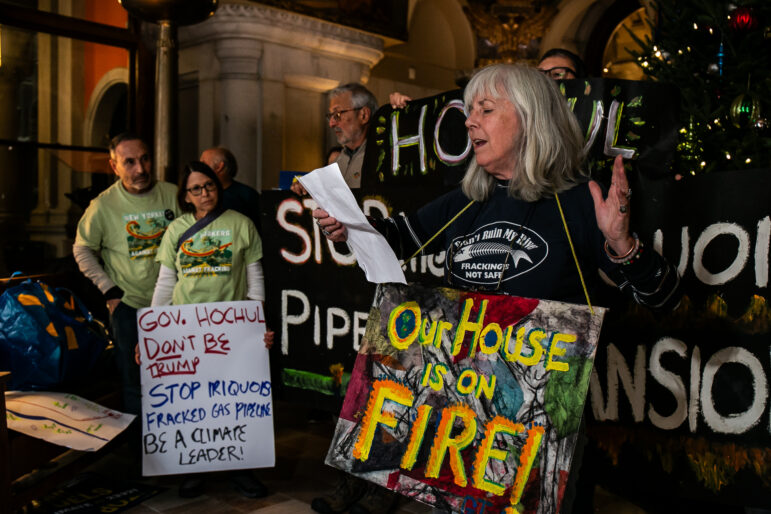
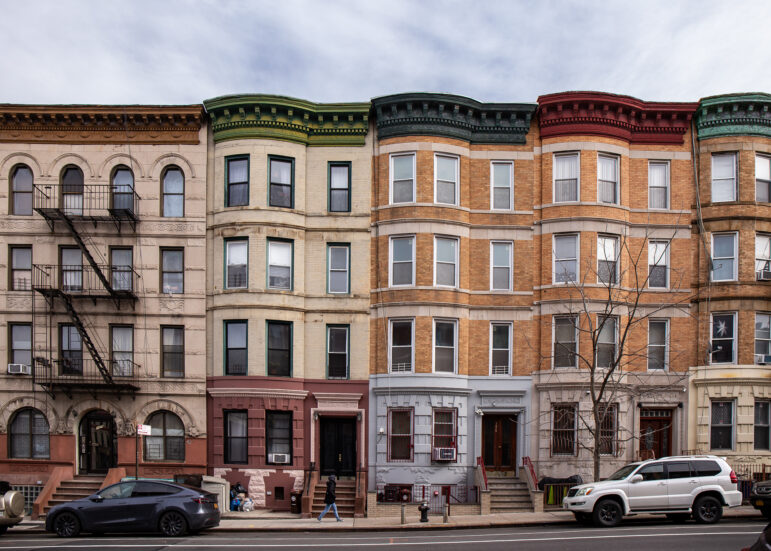
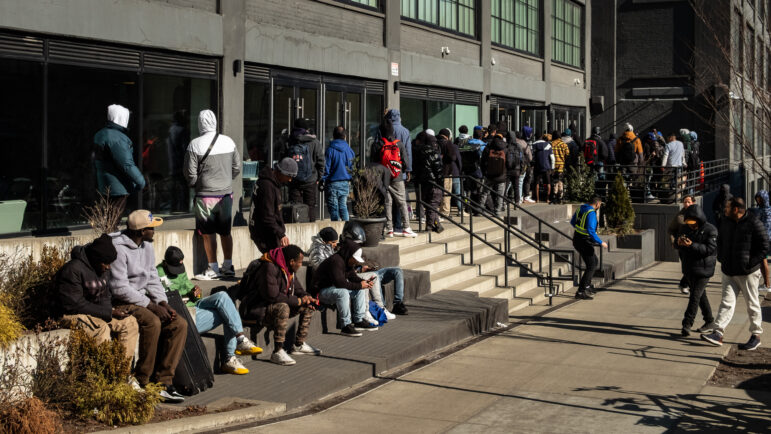
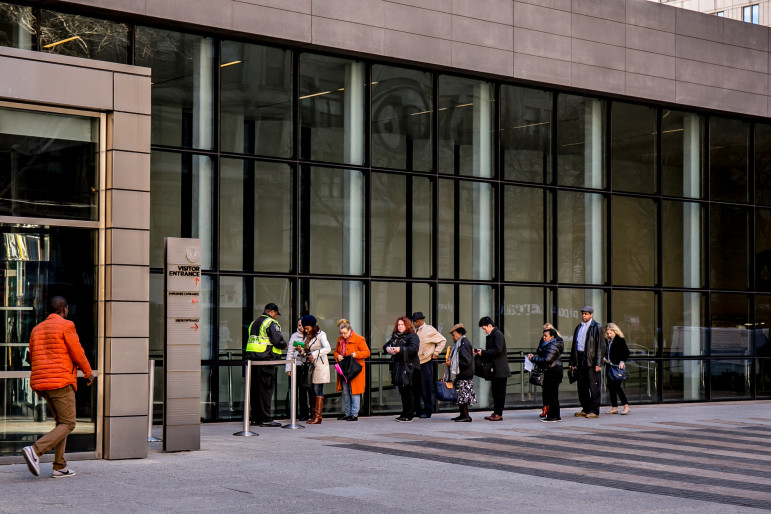


6 thoughts on “MTA’s Bronx Bus Redesign Leaves Some Disappointment at the Curb”
Yes, very few people ride the buses at night, but perhaps that’s because there are so few buses. People who work at night will drive if they can afford it. Others will take cabs/ride hail services or walk.
When I came home from work in the middle of the night, I walked home from the train, because I figured a 10 minute walk was safer than waiting at a bus stop for 40 minutes or taking one of the unlicensed cabs at the train station. It will be interesting to see how the overnight ridership is for the Bx29 and if that leads to more overnight service elsewhere.
The SI Express Bus re-design has improved travel times. Stops were eliminated to speed up the express buses, but some stops were added back later. The MTA couldn’t please everyone but Byford took an interest in the process, even riding the SI express buses himself to see what the commute was like. The SI local bus route redesign was put on hold to do the more important express routes first. The SI local redesign will take place in 2021. There’s not much the MTA can do with the local bus routes on SI due to the lack of a true borough-wide street grid and the limited number of wide 2-way streets suitable for buses.
The Bronx ignored the RFK Bridge approach for connection to Western Queens. The Q44 SBS is more for the Bronx North of East 161st Street going to Eastern Queens and Southeast Queens areas which includes connection to the AIRTRAIN – JFK in Jamaica. Those going to the Jackson Heights areas are currently forced to ride the Subway into Manhattan (either Midtown or Harlem) to connect with an overly-crowded Queens train which they may be forced to let pass leading up to 20 minute waits at transfer points (for trains that arrive every 4 minutes at Peak Hours), and an extension of the Bx2 or Bx17 to Jackson Heights Bus Terminal as well as the Bx41 SBS to LaGuardia Airport will help the cause for the Outer Borough commutes.
The Jackson Heights approach would mean a transfer to the (E) and (F) train, as well as Queens customers having direct service to Hub – East 149th Street and Yankee Stadium.
If you live south of E 161st, it’s much quicker to jump on the 4, 5, or 6 trains and take the M60 from E 125th St to LaGuardia Airport. Traveling that route via bus only, like an extended SBS Bx41, would take longer. Same getting to Jackson Heights.
If you are traveling to JFK from south of E 161st, your best bet is the Lexington Ave line (4, 5, 6) to a Queens line headed to Jamaica, and then the Airtrain. No bus would be able to make that route more quickly.
The MTA should have consolidated more stops. Still a lot of bus stops located too close together.
I agree that higher frequencies are necessary, especially off peak, but the MTA expressed that they will monitor and adjust accordingly. We need to hold them to that.
And it wasn’t mentioned in the Bronx plan but the Q44 will be extended to Fordham Rd and the Q50 will travel to Laguardia Airport. See the Queens draft plan for the routes.